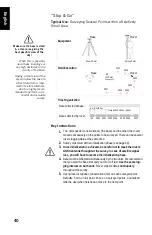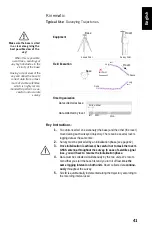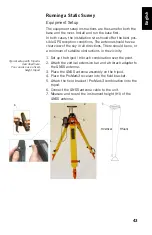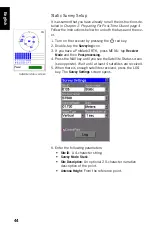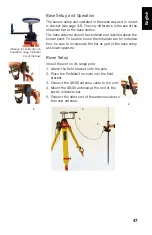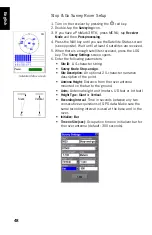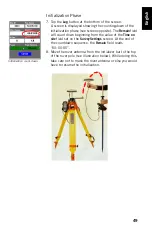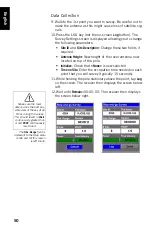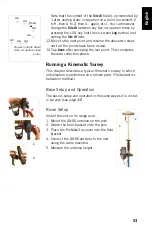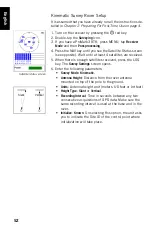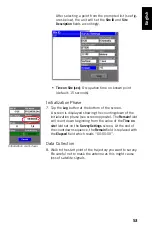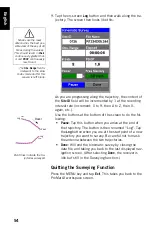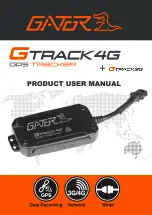
39
English
6. Post-Processing Surveying
Reminder on Surveying Techniques
Static
Typical Use
: Surveying a New Control Point.
Key Instructions
:
1.
Two units needed: one (the base) operated on an accurately known
position and the other (the rover) on the point to be surveyed. There
can be several rovers logging data at the same time.
2.
Approximate distance between the two units (baseline) must be
known.
3.
Data must be collected simultaneously by the two units. Use the
same logging interval on both units.
4.
Observation time is determined by last unit set up (start) and first unit
turned off (end). We recommend that you start the base first and you
turn it off last.
5.
Required observation time mainly depends on distance between the
two units (+ reception conditions). Rover unit estimates observation
time needed.
When Obs. Range on screen is equal to or greater than the baseline,
you can stop collecting data.
Make sure the base is sited
in a clear area giving the
best possible view of the
sky!
When this is possible,
avoid trees, buildings or
any high obstacles in the
vicinity of the base.
Having a clear view of the
sky will allow the base to
collect data from a maxi-
mum of visible satellites,
which is highly recom-
mended to perform a suc-
cessful, accurate and fast
survey.
Data collected on surveyed point:
Base
Baseline
(Range)
Observation time
Data collected at base:
Time Organization
Equipment Involved -
Field Organization
Known Point
Survey Point
Rover
















